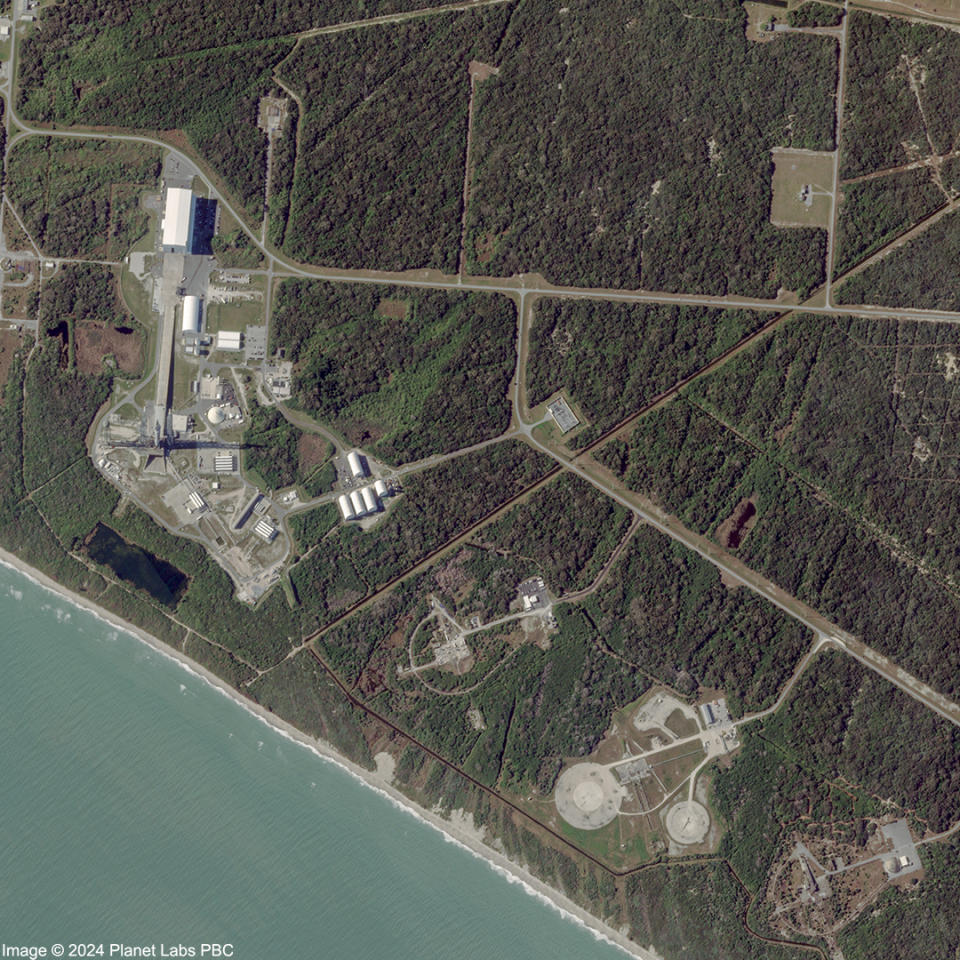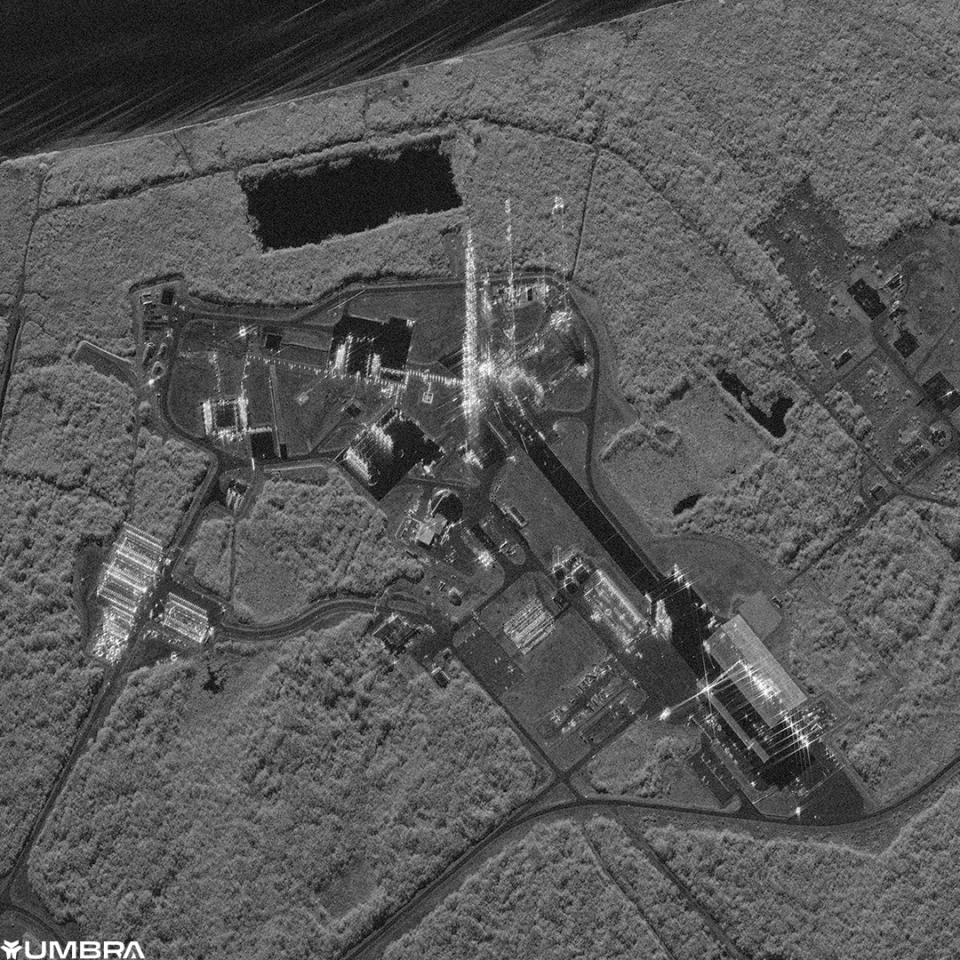Blue Origin’s next generation launch vehicle has learned to stand upright.
Satellite images captured the rocket company’s New Glenn booster standing tall on the launchpad during Valentine’s Day (Feb. 14), its towering height visible all the way from space. The booster simulator — a physical stand-in for a flight-ready rocket was recently hoisted vertical at Blue Origin’s Launch Complex 36, located at Cape Canaveral Space Force Base, in Florida.
When fully stacked, the two-stage New Glenn rocket stands over 320 feet (98 meters), and will be capable of launching 45 metric tons to low Earth orbit (LEO), according to the company’s website. New Glenn’s first stage is designed to be reusable, and is powered by seven powerful, Blue Origin-built BE-4 rocket engines. Two BE-4s also power the first stage of United Launch Alliance’s Vulcan Centaur rocket, which launched for the first time last month.
Related: ULA’s Vulcan rocket launches on debut flight (video)
Blue Origin, which was founded by Amazon CEO Jeff Bezos, has been developing New Glenn for more than a decade, and has faced delays pushing the rocket’s original debut by more than three years. Now, with the booster simulator erect on the pad, Blue Origin’s goal of a launching in 2024 is one step closer to fruition.
Standing at Launch Complex 36, New Glenn’s tall, white body could be seen all the way from space.

Using SkySat C2, a satellite from Earth imaging company Planet, SpaceFromSpace captured the above high resolution picture of New Glenn standing at Launch Complex 36. Seen along the eastern shores of Cape Canaveral, New Glenn’s shadow stretches across the pad, towering over the nearby buildings.
SpaceFromSpace captured another satellite image using the synthetic aperture radar (SAR) of the Umbra-05 satellite. The black-and-white photo shows a tighter view of the launch complex, with the rocket and adjacent lightning towers seen in white.


Back on Earth, NASA Spaceflight photographer Max Evans was also able to capture New Glenn standing at the launchpad. In a post on X, formerly known as Twitter, Evans wrote along with his accompanying photo, “we cannot wait to see you fly, New Glenn.”
RELATED STORIES:
— Blue Origin says it finally knows what caused its New Shepard rocket launch to fail last year
— See Blue Origin’s New Glenn rocket come together at Florida space coast factory (photo)
— Blue Origin video shows off updated design of huge New Glenn rocket
Indeed, a debut launch of New Glenn in 2024 would add to the growing list of private spaceflight activities ramping up on Florida’s Space Coast. The question remains, however, when New Glenn will get its wings after more than a decade of development.
The rocket’s two stages were joined together for the first time earlier this year, but its debut flight been pushed back multiple times.
The eventual first flight will loft NASA’s two-spacecraft EscaPADE (Escape and Plasma Acceleration and Dynamics Explorers) Mars mission. Liftoff is currently scheduled for August 2024.

Dr. Sarah Adams is a scientist and science communicator who makes complex topics accessible to all. Her articles explore breakthroughs in various scientific disciplines, from space exploration to cutting-edge research.





